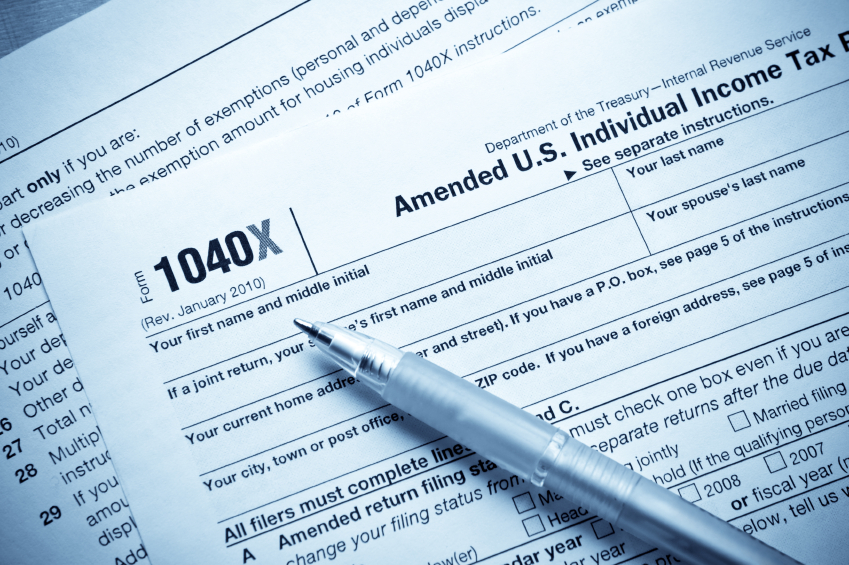Methods for Filing an Amended Tax Return
Jan 09, 2023 By Triston Martin
Did you learn too late that you neglected to claim a significant tax break? To rectify this, just submit an updated tax return. It's easy to file an updated tax return with the Internal Revenue Service. If you need to make changes to your tax return, you may follow the detailed steps here. So, if you're reading this and have been pondering how to file an amended tax return, you have come to the perfect spot.
When Should You File A Tax Return Amendment?

There are scenarios in which an amended return is warranted and others in which it is not. It is not uncommon for an adjustment to be necessary under the following circumstances:
- As tax day approaches, you remember that you forgot to take advantage of a deduction or credit.
- You filed your taxes in the incorrect category by mistake.
- You have to change your dependent status.
- You failed to report income that was subject to taxation.
- You have discovered that you have improperly claimed a credit, deduction, or cost.
If you submit your taxes and then notice a mathematical or clerical mistake, you likely won't need to file an amended return. The Internal Revenue Service (IRS) will often fix these sorts of errors on its own and give you a bill for any excess tax owed or reimbursement if the error was in your favor. Check with the IRS to see whether they've already processed the original return before submitting an amendment. That way, the Internal Revenue Service is less likely to confuse your initial return with your corrected return. The IRS completed your return if you got your tax refund. You should know that the IRS has strict time constraints on filing an updated return to get a refund.
- Within two years after making the tax payment for that year, whichever is later.
- If you try to change your return after the deadline has passed, you will likely lose your chance for a refund.
Instructions for filing a corrected tax return
Filing an updated return is a simple procedure. I've laid down the procedure for you below.
Step 1: Gather your paperwork
Collect your original tax return, as well as any additional papers required to file your revised return. A fresh or revised W-2 or 1099 form may be available if you need to revise the amount of income you reported on your tax return. To claim a tax deduction or credit that you failed to claim before, you will need proof in the form of a document for a charitable donation, a new or revised Form 1098 Mortgage Interest Statement, or even a Form 1098-T for a tax credit related to higher education.
Step 2: Obtain the Appropriate Paperwork
Form 1040-X is the IRS form to file a tax return amendment. You should also gather any updated paperwork that may be necessary. If you want to modify your itemized deductions for the year, you'll also require a duplicate of Schedule A. You will probably require a copy of Schedule B if you want to file an amended tax return to include extra interest or dividend income. Alterations to company income or costs often need the use of Schedule C and Schedule SE. Form 8949, Schedule D, and other documents can be needed to update your capital gains and losses. For filing it digitally, also learn how to file an amended tax return Turbotax.
Stage 3: Complete the 1040-X Tax Return

There are three sections on Form 1040-X.
- Column A
The figures from your prior tax return are shown here. To fill out this section, use the copy of your tax return you obtained in Step 1.
- Column B
Use this column to see how much you should raise or lower the amounts from your initial return. To add $50 in interest income that was overlooked on your original tax return, you would enter that amount on line 1, column B of your amended gross income.
- Column C
The sums in this column are accurate. The sum of the values in columns A and B should be entered here.
If you need to file an updated return, you may do so by filling out Section III of Form 1040-X. This section is where you can explain why you need to file an amended return.
Step 4: Submit Your Updated Paperwork
If you filed the initial return online and your tax software enables it, you may e-file modified tax returns starting with the 2019 tax year. If you wish to make changes to a tax return filed in 2018 or earlier, you will have to print off your finalized Form 1040-X and any other necessary amendment paperwork. Please include any supplementary materials, such as:
- Updated or brand-new W-2s and 1099s.
- Schedule A, for example, if you altered your itemized deductions, is one of the other documents or schedules that changed.
- Notices from the Internal Revenue Service (IRS) that pertain to your modified tax return.
Send your completed forms and supporting documentation to the address shown in the instructions, or submit your return online if that option is available to you. If filing an amended tax return causes a larger tax liability, you must pay the difference. Send a check with the modification or pay electronically by going onto the IRS website. You may reduce the amount of interest and fines you'll have to pay if you pay your tax bill right away instead of having to wait for the IRS to give you a bill. Keep in mind that the IRS may take up to eight weeks to complete your revised tax return if you submit it on paper instead of electronically. For your convenience, first, learn how to file an amended tax return online.








